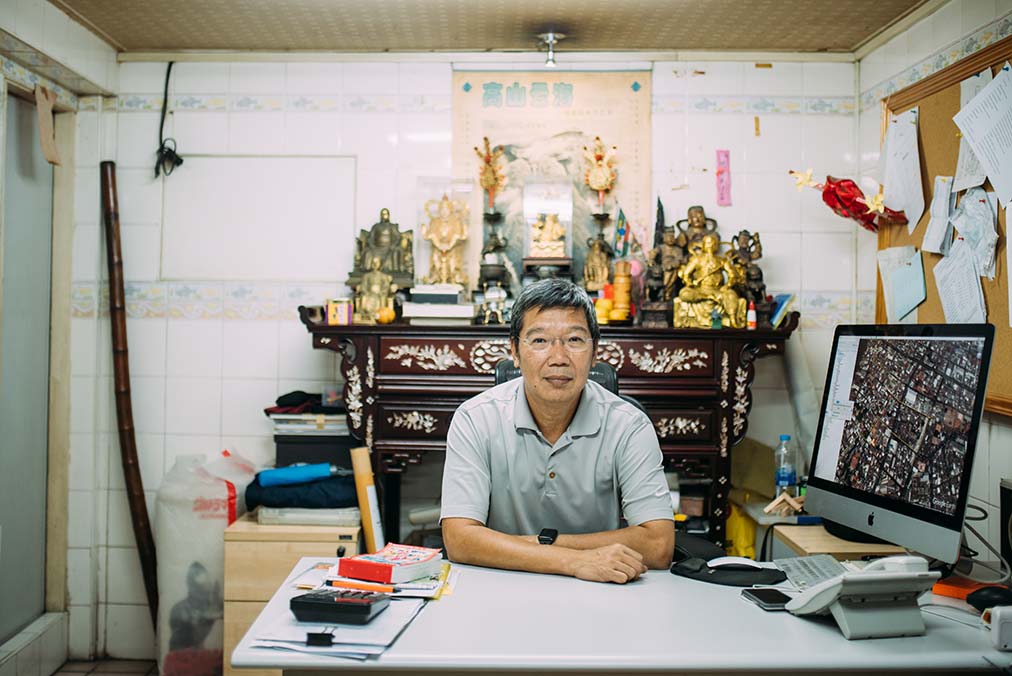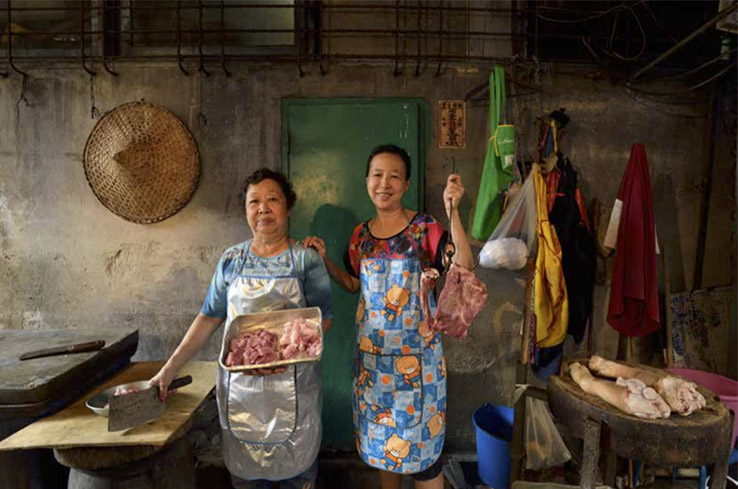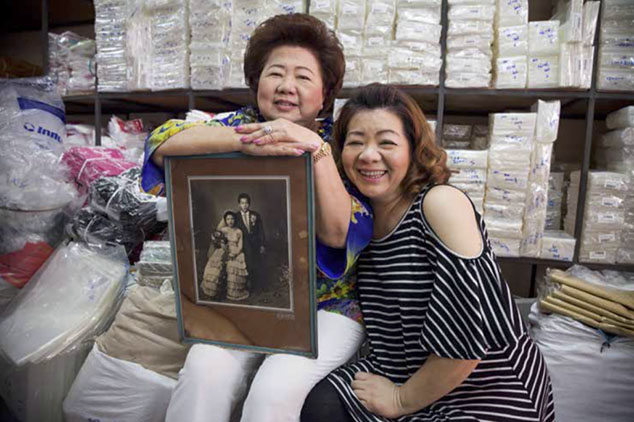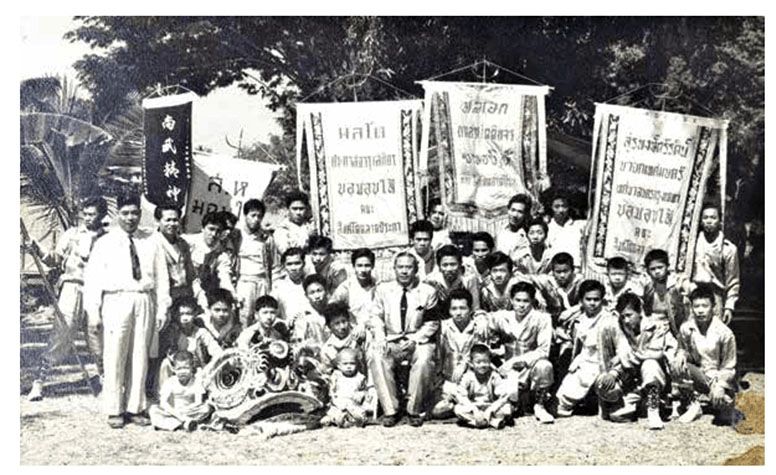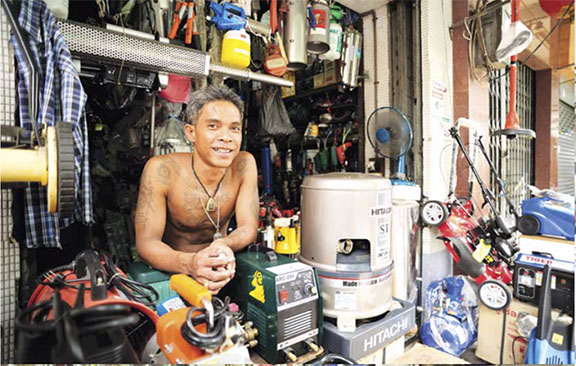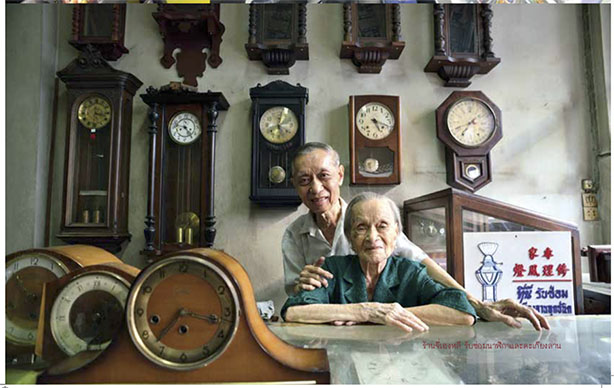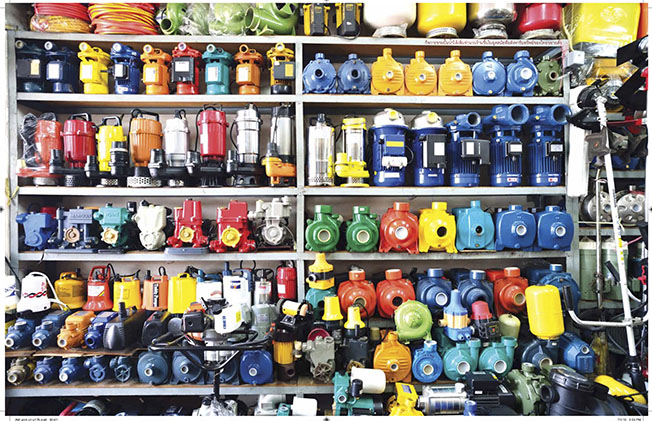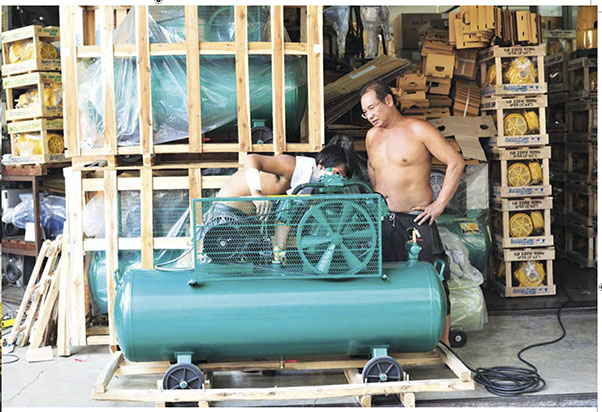What is a major difference between Chinatowns in the U.S. vs. Bangkok’s version of Chinatown?
The personality or characteristic of Bangkok’s Chinatown, in Thai: Yaowarat is where east meets west, not where the east submits to the taste of the West. Yaowarat’s Sae Heng Lee Building is a good example with its mix of Hong Kong and Shanghai. Unfortunately much of the distinct Chinese architecture disappeared after during a number of fires during its 200 year history. Modernisation also takes its toll on the architectural heritage but there is still some of the old days left.
One of these places is Talad Noi (The little market) or the Chinese East Market. Buildings there are distinct Chinese in contrast to Charoen Krung Road which became the west market. Along Charoen Krung Road you’ll see more European style architecture however both neighbourhoods are part of Chinatown. This is one aspect of Chinatown’s diversity.

They came for the art work, they came back for the neighbourhood and its hidden treasures
Creating connections between Bangkok’s youth and the heritage of the city through art.
I hope we can preserve Chinatown’s rich heritage and diversity for young people to see and understand. It’s a beautiful and important part of our city.
But how can we get young people interested in the old cultures and to support the historic communities of Bangkok? I spent ten years and managed to attract a few hundred people. Then came the Buk Luk urban art event. They were never really engaged with our culture and they managed to do that in less than a month. How did they do it?I hope we can preserve Chinatown’s rich heritage and diversity for young people to see and understand. It’s a beautiful and important part of our city.
They created art murals and graffiti, such as the elephant mural on Song Wat Road. Over a thousand young people came to see it. They enjoy the art work but also find other beautiful places in the area. They discover the myriads of small details of our neighbourhood and say: “hey, that’s an old building, wow that’s beautiful”. That is exactly my goal. Sharing our passion for this community. Telling them about the stories of the people and culture. Plus there’s great food around.

A favourite activity for visitors is roaming the alleys in search for art work.
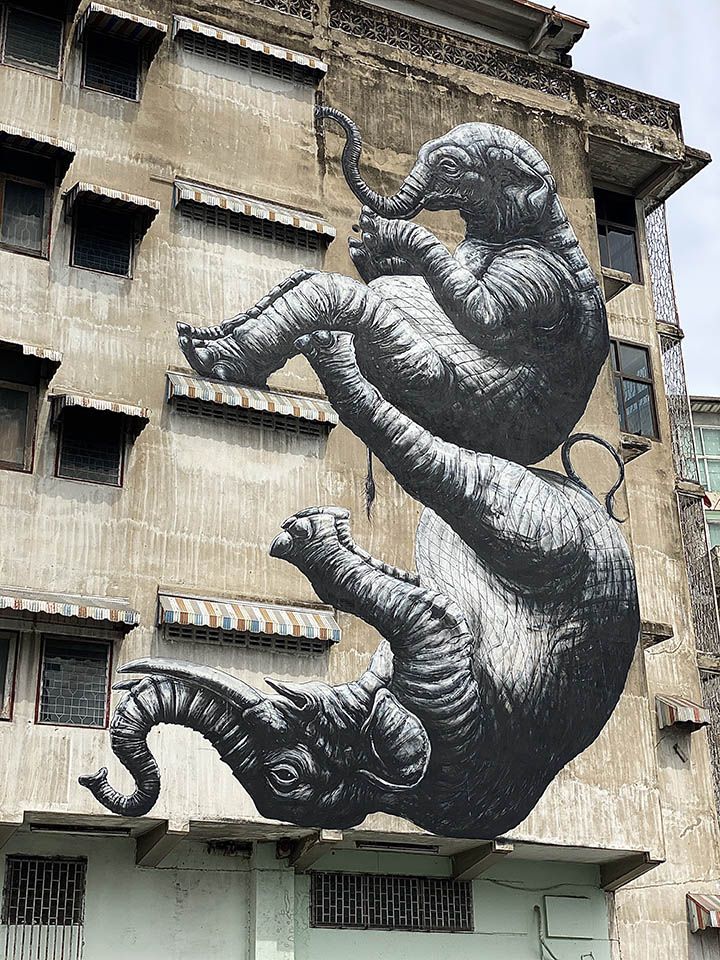
The impressive elephant murals by famous Belgian street artist ROA.
How to elevate the status of old districts beyond art?
The answer rests in our appetite for food. One effective way to raise the value of the area and make everyone happy is if you recommend the best food experience of the communities.
Coming to the right place at the right time is a good way to support the community. Timing is key! Let’s say we’re going to visit my friend’s Salapao workshop (Chinese steamed buns). I know that they finish making buns at around 4:00p.m. That’s the best time to stop by to have them. That’s when they come fresh from the steamer and it’s much more delicious. The owner is very proud too. He will tell you the story of his business and everything you want to know about Chinese steamed buns but if you come here at 2:00p.m. they are busy working and cannot talk to you. It makes a difference.
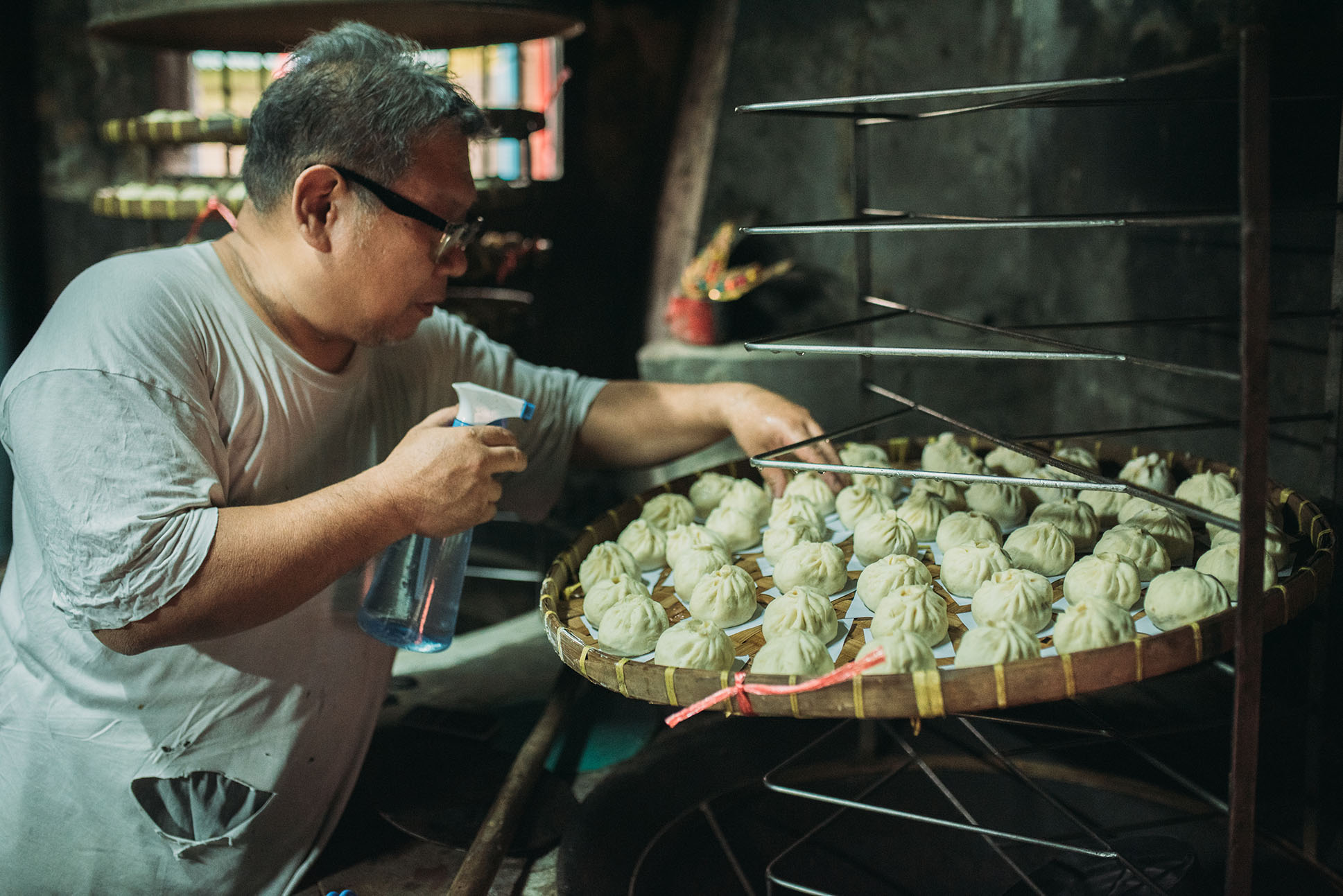
Somchai’s steamed bun friend Mr. Wichien treating his yummy creations with love.
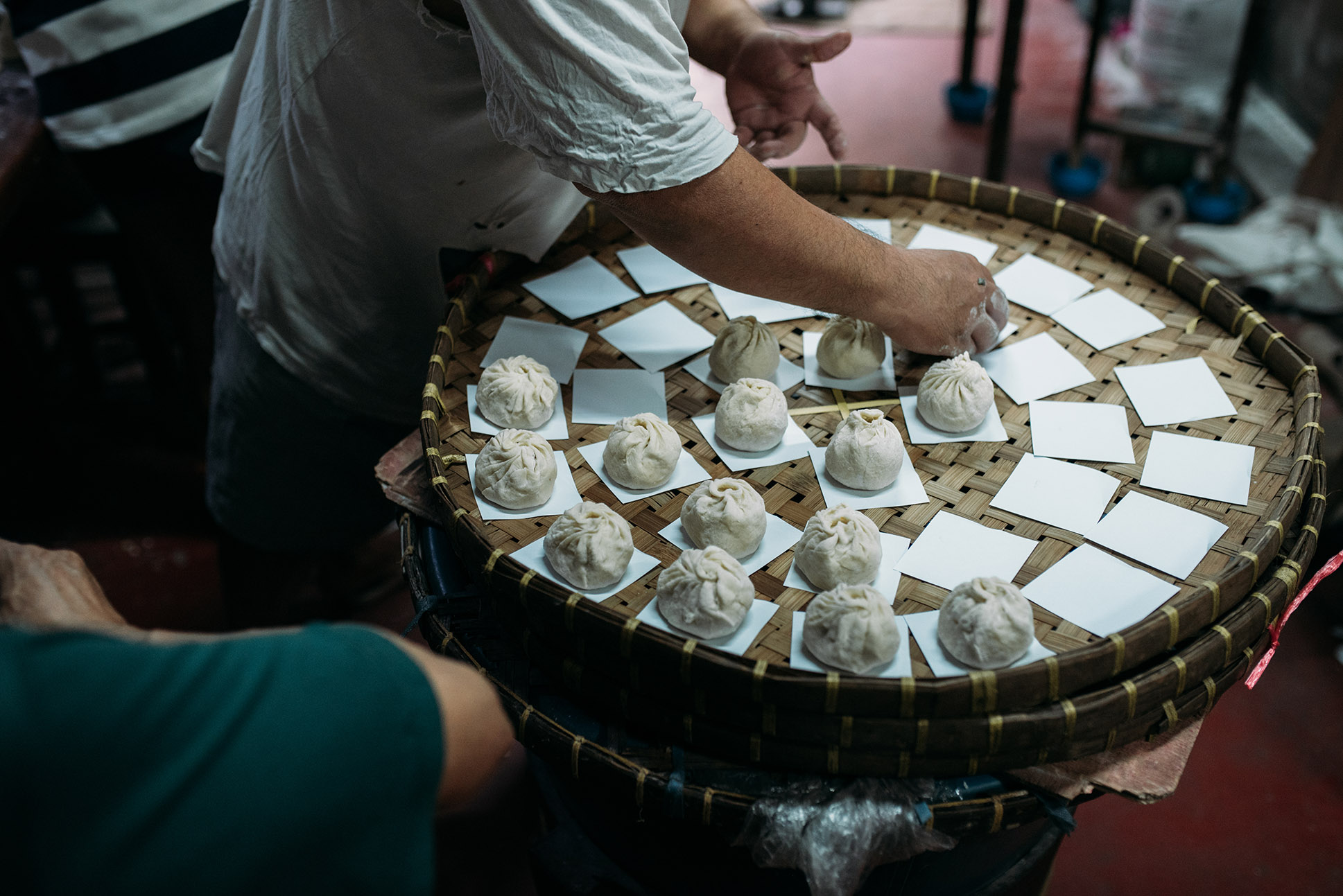
Come at the right time to experience the way of life of the locals. Food as part of the heritage.
Will food and art be enough to save the heritage of our neighborhoods?
There are big challenges to preserve our old communities and neighbourhoods. Some historic communities cannot not be saved. My friends published a book with the story of the people of the Woeng Nakhon Kasem community.
The builders of success and their heritage
Most of the people in Woeng Nakhon Kasem hail from Chai Jo Keng Ia, a province in China. They are different from people of other neighborhoods. The people from that area were very hard working and very smart. They had a lot of ideas and became rich during and after WW2. At that time Thailand could not import any motors. So, the people of the Woeng Nakhon Kasem community specialized in repairing and making motors, water pumps or motors producing electricity. For a time it was the only place to buy a water pump in Bangkok.
The art of shopkeeping and display. You can see the way the Keng Ia people arrange their shops. Every centimetre is used for display. There is just enough space for one person to get either in or out of the shop. The way they stack their products is art in itself. A lot of shops also sold records or sold and repaired all kinds of music instruments. Woeng Nakhon became the go-to place for anyone practicing or interested in music.
The success of the community is reflected in the way the people designed their houses. Modern Chinese preferred European influence. They changed the names of their shops to English names. So Kuan Heng Seng became KHS. It was popular to become western.
What happened to the Woeng Nakhon Kasem community?
All the shops are gone and with them the spirit and charm of the community. The residents have spread far and wide. It’s sad that Woeng Nakhon Kasem disappeared but I also have to accept that things change all the time.
What can we do about change? Change is coming whether we like it or not. I love my neighbourhood, so what I do is to take a lot of pictures. I keep the memories of the good old days and pass them on to younger people like you, my son and my students. To show you what it used to be like. Back then when I started, people looked at me in a strange way. They thought of me as the crazy guy with the camera but now it pays off. Through my work I was able to support the people in Woeng Nakhon Kasem. I gave them old pictures from my archive to keep the memory of this neighbourhood in form of a photo-book.
We also asked people to provide us with copies of old pictures. Having this documentation is great. However we won’t publish it right now. If we show it now, you’d only see that Woeng Kasem is dead but if we wait until the new Woeng Nakhon Kasem is born then we will show the people the memories of Woeng Nakhon. You’ll see the difference between past and present. You will see the spirit of those who lived there and the beauty of their community. I tell my friends in Woeng Nakhon Kasem, they will never die. Their memory is always with us.
Interested to experience the change of Chinatown’s urban landscape?
